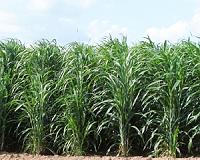 |
Ithaca NY (SPX) Mar 01, 2011 Gaining new insight into how efficiently the microbes in large bioreactors produce methane from brewery waste, Cornell scientists hope to use their new knowledge to shape these microbial communities to produce liquid biofuels and other useful products. The scientists Largus T. Angenent, associate professor of biological and environmental engineering, and the first author and research associate Jeffrey J. Werner, published "Bacterial Community Structures Are Unique and Resilient in Full-Scale Bioenergy Systems" (Proceedings of the National Academy of Sciences, Feb. 22, 2011.) The scientists had access to a plethora of data, thanks to a collaboration with engineers at Anheuser-Busch InBev, which makes Budweiser beer and operates nine domestic beer breweries that treat wastewater in bioreactors. They took regular samples of bioreactor sludge from each of the facilities over the course of a year and, using state-of-the-art genome sequencing software, they analyzed more than 400,000 gene sequences of the microbes in the sludge. Among the thousands of species of bacteria, the researchers identified 145 types that were unique to each of the nine facilities - showing that each bioreactor hosted a specific microbial community. In their analysis they observed that certain types of bacteria called syntrophs had surprisingly stable populations. "The cool thing we found was that if you're looking at these thousands of species of bacteria, it's a very dynamic system with things dying off and replacing them," Werner said. "There are certain signature populations that are resilient. Even if they get disturbed, they come right back up." Typically inside these million-gallon bioreactor tanks, the microbial populations in the sludge interact and one of them produces methane gas. Anheuser-Busch InBev recoups 20 percent of its heat energy use through the methane produced, saving the company millions of dollars every year. Angenent said that where the genome surveys of these microbial communities could lead is particularly exciting. Understanding their functions and how they change with environment - be it pH or temperature, for example - could lead to learning how to make the communities of microbes perform new functions. In ongoing research, the Cornell engineers are looking to prevent methane production by the microbes, and instead, to shape the bacterial communities to produce carboxylates, which are a precursor to the alkanes found in fuels. "We are going to shape these communities so they start making what we want," Angenent said.
Share This Article With Planet Earth
Related Links Cornell University Bio Fuel Technology and Application News
 Chromatin's Sorghum Hybrids Top In Biomass Yield, Energy And Sugar Content
Chromatin's Sorghum Hybrids Top In Biomass Yield, Energy And Sugar ContentChicago IL (SPX) Feb 25, 2011 Chromatin has announced that its sorghum hybrids showed top performance in its 2010 biomass and sugar testing programs when compared to other materials from public, private, and commercial sorghum collections. In the first trial, 50 biomass sorghum entries were planted in 4 replicate plots and tested for total yield, moisture, energy, and ash content. In a similar, second trial, Chromatin ... read more |
|
| The content herein, unless otherwise known to be public domain, are Copyright 1995-2010 - SpaceDaily. AFP and UPI Wire Stories are copyright Agence France-Presse and United Press International. ESA Portal Reports are copyright European Space Agency. All NASA sourced material is public domain. Additional copyrights may apply in whole or part to other bona fide parties. Advertising does not imply endorsement,agreement or approval of any opinions, statements or information provided by SpaceDaily on any Web page published or hosted by SpaceDaily. Privacy Statement |